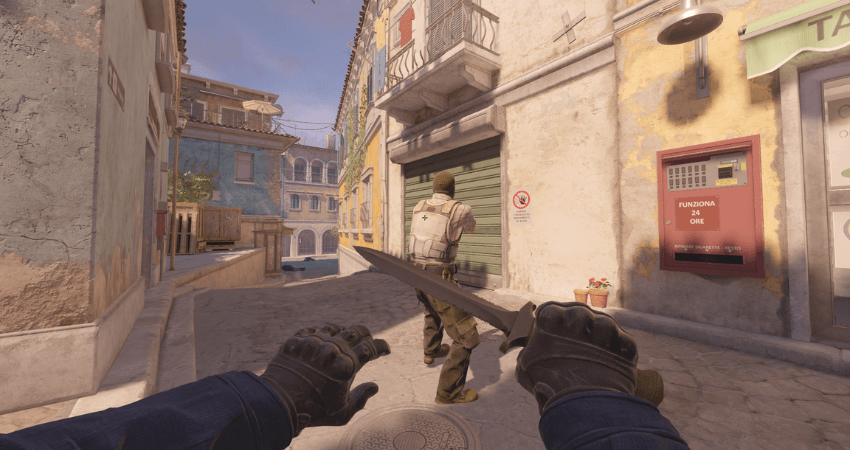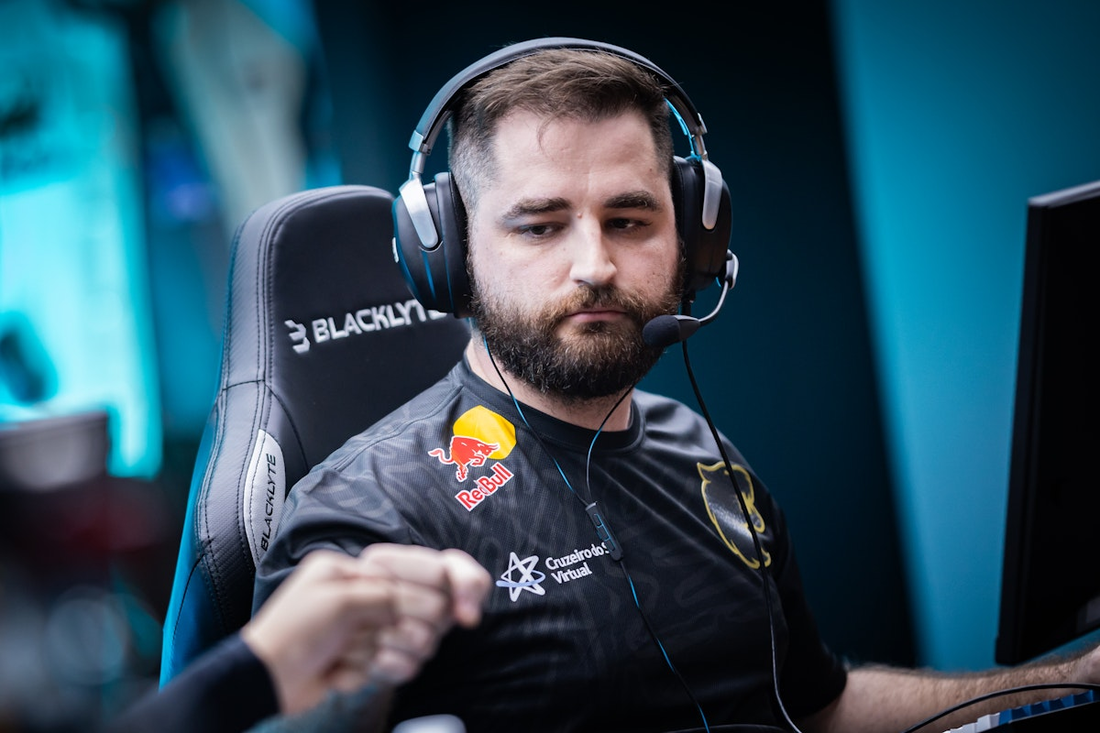Many CS2 fans think about improving only their aim to reach higher ranks in competitive modes – but that's not enough. Obviously, this factor is one of the most important in an FPS, so much so that we've already worked on a complete guide focused only on aim and movement in CS2. However, it's still a cooperative experience and demands tactical knowledge – as well as a lot of teamwork.
Today's article will cover exactly that: learn extremely relevant concepts about team tactics to quickly improve in CS2!
Different roles within a team

Many competitive games clearly define the role of each team member. In Valorant, for example, there are characters who are naturally more effective at gathering information about potential threats behind them – such as sentinels – while others have better abilities to open up the bomb site.
In CS2, we don't have this distinction; all team members have the same weaponry and health. Therefore, in lower ranks, we rarely see teams divided into various roles.
But ideally, you should define who’ll do what, especially when playing as a Terrorist. See the main roles below.
Entry-Fragger
The Entry-Fragger is responsible for opening up a bomb site. Most of the time, we don't know where the enemy CT is located, so this player's role is to quickly and aggressively "show their face," whether by jumping or running without fear of death.
It's necessary to open up the area with this aggressive movement to force the enemy to move their aim as far away as possible from the entrance where their teammates will pass. This way, you'll have information about where the enemies are, and with them completely distracted, your team will advance easily.
Practicing movement is fundamental when playing this position. You're not obligated to eliminate every opponent, but you must stay alive as long as possible to assist your team's execution.
A poor Entry-Fragger is usually hesitant to advance and locks the team at the bomb site entrance. This allows the CT to target all their allies, and also maximizes the impact of grenades – which will hit the entire team.
Support / Trade
Playing as Support, you'll be the one who appears right after the Entry. With information about the opponent's location, your role will be to exploit their vulnerability and eliminate them as quickly as possible.
It won't be a problem if the Entry falls, but ideally you should eliminate the enemy early. Otherwise, they'll have time to, after eliminating the distraction, refocus their aim on where your allies are.
Lurker

This role is one of the best known in FPS games – and is commonly used in strategies even by newcomers. The Lurker is the player who acts silently to gather information and secure kills by flanking opponents.
There are two main ways to perform this role. The most common is to head towards the opposite bomb site from where your team plans to advance; that is, while your allies are performing execution A (for example), you will go to B without drawing attention. This way you can hear when the enemies are rotating, passing on information and securing some kills from behind.
Another way is by hiding in your team's own spawn, in which case the targets will be the opponents who try to flank your teammates during a rotation. It's literally "the Lurker's Lurker".
Anchor
This is a role exclusive to CTs. The Anchor is the player who positions themselves in isolation at one of the bomb sites, with the mission of ensuring the stability of that point. They shouldn’t abandon their position easily.
This role is crucial for neutralizing pressure from the opposing team, especially against fakes. If the Anchor abandons their point because of a fake, all CTs end up rotating to an empty location, leaving the opposing bomb site completely vulnerable to planting the C4.
The Anchor is also vital for punishing lurkers/flanks who try to catch the CTs off guard during rotation. They’re the sentinel covering the team's rear.
IGL: In-Game-Leader
Last but not least, we have the IGL – this term represents the person responsible for strategizing each round. It's worth mentioning that tactics shouldn't only be considered in the intervals between rounds; it's necessary to find a solution after each kill, one death will change the scenario – especially in post-plant and clutch situations.
The IGL's role proves that CS2 isn't just about aim. A great example of an IGL is FalleN, who currently plays for FURIA. Although the Brazilian no longer possesses the incredible reflexes that made him one of the best snipers in the world in 2016 and 2017 – skills that even earned him a major title – he’s still extremely impactful and recently captained FURIA to the title at Fissure PlayGround 2.
The scene and the team itself recognized that FalleN's contribution was fundamental, not for the frags, but for his game reading and ability to orchestrate rounds alongside his coach.

I recommend playing with friends or acquaintances to facilitate teamwork. Obviously, when playing solo, you’ll encounter teammates who don't know or don't want to follow these roles – especially in the lower ranks of competitive and premier play. However, your chances of victory increase simply by having an understanding of these concepts, provided you explain them and your plan to your allies.
Don’t Fight Alone
Some of the fundamentals in this topic are excellent for avoiding simple deaths that often occur due to lack of knowledge. This topic can be even more effective for solo players, provided they communicate with their team.
Crossfiring
This tactic is often used in more enclosed environments or those controlled by smoke screens – where you and an ally focus on only one enemy entry point – but each of you would mark this advance from a different angle. This way, the opponent would have to look in two different directions and could be easily taken down.
Open alongside an ally
This topic follows the same idea as the previous one – exploiting numerical advantage – however, it's more useful when you want to be aggressive. Instead of your team marking a point to eliminate whoever appears, you’d be the ones appearing.
Imagine a situation on Mirage. A last surviving terrorist is in the cave and heads towards bomb site A to plant the C4. You are a CT located at the "head" and your teammate at the firing box. Both of you opening simultaneously, aiming at the cave, is the best option. The opponent only has one aim and will hardly be able to kill one, switch aim to the other side, and kill the other.
If you open alone, you give the enemy the chance to win two separate duels. They spend some bullets to eliminate you and have time to reposition, reload, or simply wait for your teammate to open, fighting only one 1v1 at a time.
Remember: A 2v1 is much better than two 1v1s – use your numerical advantage.
Provide coverage of the region
The previous points are primarily indicated in situations of numerical advantage and when you know the location of your target. Otherwise, it’s highly recommended that you provide the most complete coverage possible of a region.
For example, when playing as a Terrorist, it's not enough for just the Entry-Fragger to enter the bomb site. It's crucial that the players coming from behind have their crosshairs split to cover all angles of the room. Furthermore, the last player in the advance queue should cover the team's back to prevent an enemy CT from flanking the team – punishing everyone by surprise.
This behavior is also recommended on defense. Define who is watching which pixel to prevent two players from monitoring the same location – this would leave other attack routes or the team's flank unprotected.
Good Comms
Many players in competitive titles are discouraged from communicating via chat due to the toxic part of the community – and that's completely understandable; we don't encourage you to try to engage with users who seek to undermine you. However, I strongly recommend using the microphone in matches where you’re with a friendly team.
Unless you want to act as an IGL, it's not necessary to share tactics with your teammates, but it's highly recommended that you inform your partners about the following:

Conclusion
Using all these concepts during a match, especially if you've also read our aim and movement guide, will exponentially increase your chances of triumphing on competitive CS2 maps!
I hope you enjoyed this article. Feel free to ask in the comments if you have any questions or suggestions.













— Comentarios 0
, Reacciones 1
Se el primero en comentar